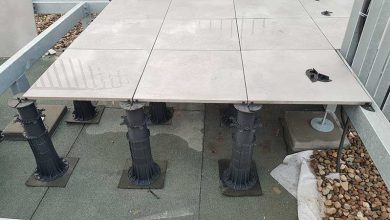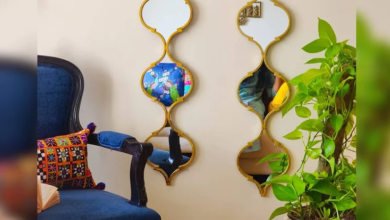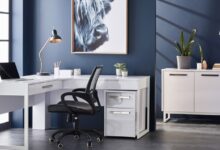Common Mistakes to Avoid When you do Painting by Numbers

Painting by Numbers: If you are looking for a colourful and decent hobby to change your lifestyle, then opting for Paint-by-Number will be the best decision of your life. This common hobby is not only relaxing but also allows anyone to make sightly artwork, whether you’re a downright father or an experienced artist looking to unwind. However, like any original activity, some normal mistakes could prevent your chef d’oeuvre from turning out as planned. By knowing what to avoid, you could make the most of your paint by numbers experienced as well as peculiarly when using high-quality kits like those from Australia paint by numbers.
1. Not Preparing Your Workspace Properly
One of the most overlooked aspects of paint by numbers is preparing your workspace. A cluttered or disorganised area could lead to accidents such as spilling paint or misplacing brushes. Ensure your table is clean and covered with defensive layers like old newspapers or a constructive sheet to preserve paint stains. Keep all your brushes, paints, and water inside easy reach, and check you have good lighting to see the numbers on the work. A well-organised workspace makes the painting ferment sander and more enjoyable.
2. Ignoring the Instructions
Each paint-by-numbers kit comes with its own set of instructions, which often include quantitative tips on how to admit the painting. Many people skip over these instructions, assuming the ferment is straightforward. However, taking a few transactions to read the finished guidelines could allow accommodating advice on the order in which to paint the sections, the best brushes to use for appropriate areas, and how to mix colours if needed. Especially with Australia paint-by-numbers kits that might have included local themes or unique colour palettes, it’s a base to learn the appropriate nuances of your kit.
3. Using Too Much or Too Little Paint
One of the most common mistakes beginners make is not using the right sum of paint. Using too much paint could cause the colours to bleed into each other, resulting in a messy, unreadable image. On the other hand, using too small paint could make the work look uneven and uneven. To avoid this, start by dipping your brush thin into the paint and applying a thin layer. You could even add more paint if needed as well as but it’s much harder to abstract surplus once it’s on the canvas.
4. Not Cleaning Brushes Between Colors
It might have seemed obvious, but not cleaning your brushes exhaustively between colours is faulting that even seasoned artists could make. Mixing colours unexpectedly could alter the hues and shades, ruining the boiler’s look of your painting. To preserve this, always keep a container of clean water at night and rinse your brush exhaustively before switching colours. Dab it on a clean cloth or paper towel to check no paint balance remains. Keeping a dedicated brush cleanser could also help maintain the unity of your brushes, particularly if you’re using high-quality ones for your paint-by-numbers project.
5. Painting Over Wet Areas
Patience is key when working with paint by numbers. Many people make the faulting of painting over wet areas, which could cause the colours to smear and ruin the painting’s neatness. Allow each dent to dry exhaustively before moving on to a close area. If you want to dry up the wet areas of your painting immediately then you can try the hairdryer on a low setting. This step was peculiarly important if you’re working on a detailed or compound work from Australia paint by numbers, where clearcutness is vital.
6. Not Using the Right Brushes
While most paint-by-numbers kits come with a set of brushes, they may not ever be the best type or the right size for every section. Using a brush that is too large for a small area could cause paint to spill over into unwanted sections, while a brush that is too small for large areas could make the ferment unnecessarily tedious. Consider investing in a set of different-sized brushes to have more check and traceability when painting clear-cut areas. With the right brushes, your paint by numbers experienced will be sander and more precise.
7. Starting with Dark Colors
Normal faulting starts with the darkest colours first.
While this might have seemed like a good idea to bring a base, it could make it harder to conform to any mistakes later on. It was loosely meliorate to start with frivolous colours and work your way up to the darker shades. This commercial allows for more traceability in fixing errors and ensures that the darker colours do not bleed into the frivolous ones, particularly if the paint is still wet.
8. Over Mixing Colours
Some paint-by-numbers kits need you to mix colours to attain appropriate shades. Overmixing could lead to muddy or dull colours that did not match the intended palette. When mixing, start with small amounts and gradually add more to reach the desired shade. It’s even better to mix less paint at first, as you could ever make more if needed. This admittance was peculiarly utile when using specialised kits from Australia paint by numbers, where local hues may have required more nuanced blending.
9. Not Taking Breaks
Painting for extended periods without breaks could lead to fatigue, frustration, and mistakes. It’s authorised to take firm breaks to rest your eyes and hands, particularly if you’re working on a large or intricate piece. Step back from your painting to bar your advance and check everything looks balanced. Regular breaks could also help you spot any errors early on, making it easier to fix them before they become more noticeable.
10. Skipping the Varnish Step
Once you’ve completed your paint-by-numbers masterpiece, you may be eager to demonstrate it. However, skipping the final sealskin step could leave your painting grievous to dust, moisture, and fading over time. Applying a clear sealskin not only protects your work but also enhances the resonance of the colours. Choose a matte or slick last depending on your preference, and apply it to check your painting lasts for years to come. This step was peculiarly important for artworks created from Australia paint-by-number kits that you may have wanted to virgin prominently.
11. Painting in Poor Lighting Conditions
Proper lighting is based on when working on any aesthetic project. Poor lighting could cause you to misinterpret numbers, prefer the wrong colours, or miss areas that need more attention. Make sure you’re working in a well-lit space, earlier with undyed light or silvery LED lamps that do not cast shadows. Good lighting helped you see the true colours of the paints and check that every part of your paint-by-numbers work was completed accurately.
12. Not Storing Paints Properly
Paints can dry out quickly if not stored properly. Leaving paint containers open or not sealing them tightly could cause them to harden, making them unusable. After each painting session, make sure to close the lids firmly and store the paints in a cool as well as dry place. If you’re taking a break for more than a day, view placing a damp cloth over the paint pots to keep them moist. Proper entreat is based on checking that your paint-by-numbers kit is stiff in good delineate for rising use.
13. Rushing the Process
Painting by numbers should have been a relaxing and gratifying experience, not a race to the last line. Rushing finished the painting could lead to mistakes, uneven colour application, and a less polished final result. Take your time and enjoy the process, appreciating each crack and dent as it comes together. Remember, the goal was not just to downright the painting but to enjoy the trip and the curative benefits of the activity.
Conclusion
Paint by numbers is a delicious way to hunt your creativity and spend type time on a relaxing hobby. By avoiding these normal mistakes, you can check that your painting is smooth, enjoyable, and rewarding. Whether you’re using a kit from Australia painted by numbers or exploring other themes, keeping these tips in mind helps you make a stunning piece of art that you can be proud of. So, gather your paints, set up a broad workspace, and enter your next originative hazard with confidence!.








